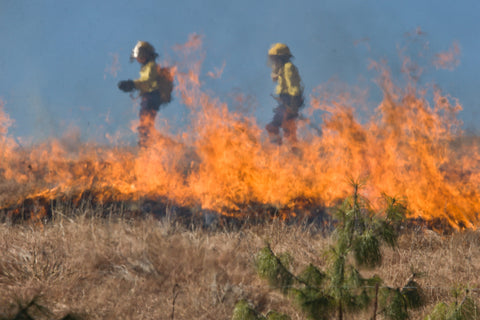
All of us experience a variety of hazards to our health in our day-to-day lives. Flying in planes, driving in vehicles, and being exposed to air pollutants, all pose a different level of risk. No doubt, some risks are inevitable. However, indoor air pollution is a risk that could be improved. Also, it could be the reason why indoor air monitor tools are gaining popularity these days.
In the last few years, several scientific evidences have demonstrated that the air within the houses and other buildings can be more badly polluted in comparison to the outdoor air. Other studies demonstrate that individuals spend 90% of their time indoors. Therefore, for most of us, the health risks may be greater due to indoor air pollution than an outdoor one. Children and chronically ill are among the most vulnerable groups for adverse effects of indoor air pollution.
From wildfires, floods, and hazardous waste to building types we live and work in the impact our indoor air quality. Let’s go deeper and ascertain the impacts of wildfires, floods, hazardous landfills or waste and building types on your indoor air quality.
Wildfires & Indoor Air Quality
Wildfire smoke can make outdoor air unsafe to breathe. Local officials may recommend you to remain indoors during a wildfire. You should know that some of the wildfire smoke from outdoors can invade your home and make it unsafe to breathe indoor air as well. There are many ways in which outdoor air which includes fine particles from wildfire smoke can enter the house.
- Through open doors and windows
- Through mechanical ventilation devices like kitchen or bathroom fans venting to the outdoors or HVAC systems with a fresh air intake
- Through tiny openings, cracks, joints, and around closed doors and windows
Wildfire smoke is made up of a complicated blend of fine and glass particles produced while wood or other organic materials burn. One of the biggest health risks from smoke is from these fine particles. These can get into your respiratory system and eyes - whether you are indoors or outdoors, where they can lead to health problems like runny nose, or burning eyes. Fine particles can even aggravate chronic lung and heart diseases - also associated with premature deaths in individuals with these health issues. Wildfire smoke can impact your IAQ (indoor air quality) differently based on the location of the fire and the smoke density.
Floods & Indoor Air Quality
Flood water can make the air in houses unhealthy. Failure to eradicate contaminated materials and to alleviate humidity and moisture can pose serious lasting health risks. Wet materials and standing water in the house can become a breeding ground for microorganisms like bacteria, viruses, and mold. They can result in triggering allergic reactions, disease, and continuing damaging materials long after the natural disaster.
That’s why flood cleanup is necessary as soon as possible in order to avoid indoor air quality problems. Make sure to check your indoor air quality with the help of a quality indoor air monitor devices.
Landfills & Indoor Air Quality
Landfills can generate objectionable smell and landfill gas can enter through solid and garner in nearby buildings and homes. Of the gases that landfills produce, ammonia, methane, sulfides, and carbon dioxide are of high concern. Landfill gases can enter from a landfill through the soil into the indoor air of properties nearby. They can enter a property through doors, windows, and ventilation systems. And in soil, gases can move and enter a property through cracks in the walls and floors, also known as soil vapor intrusion. Once entering a property landfill gases may garner in regions of poor ventilation, like basements, affecting indoor air quality.
Short-term exposures to high levels of hydrogen sulfide and ammonia in the air can result in eyes, throat and nose irritation, breathing difficulties, headache, and nausea. In short, landfill gases can cause health issues. Homeowners should take the necessary step as soon as possible for landfill gas in their homes.
Moreover, you should regularly check your indoor air quality using an indoor air monitor.
Building Types & Indoor Air Quality
There are educational buildings, business buildings, industrial and factory buildings, institutional buildings, residential buildings, storage buildings, and many other buildings and structures. The concentration and type of air pollutants present in an indoor atmosphere will vary on the basis of the building type and region relative to outdoor sources, building and construction systems, etc. For instance, for domestic or residential buildings, the pollutant sources include outdoor air, furnishing materials, construction materials, consumer activities like cleaning products, tobacco smoke, etc.
Therefore, you must check the indoor air quality of your building and then follow the best practices designed for the type of building you live or work to improve the indoor air quality.
The Final Verdict
Studies have demonstrated that indoor poor-quality air has a significant impact on us. Around 3.8 million people worldwide die every year due to indoor air pollution. Moreover low-quality air affects human productivity and human capability to process information. That’s why regular indoor air monitoring and improvement is essential to your well-being.

Leave a comment